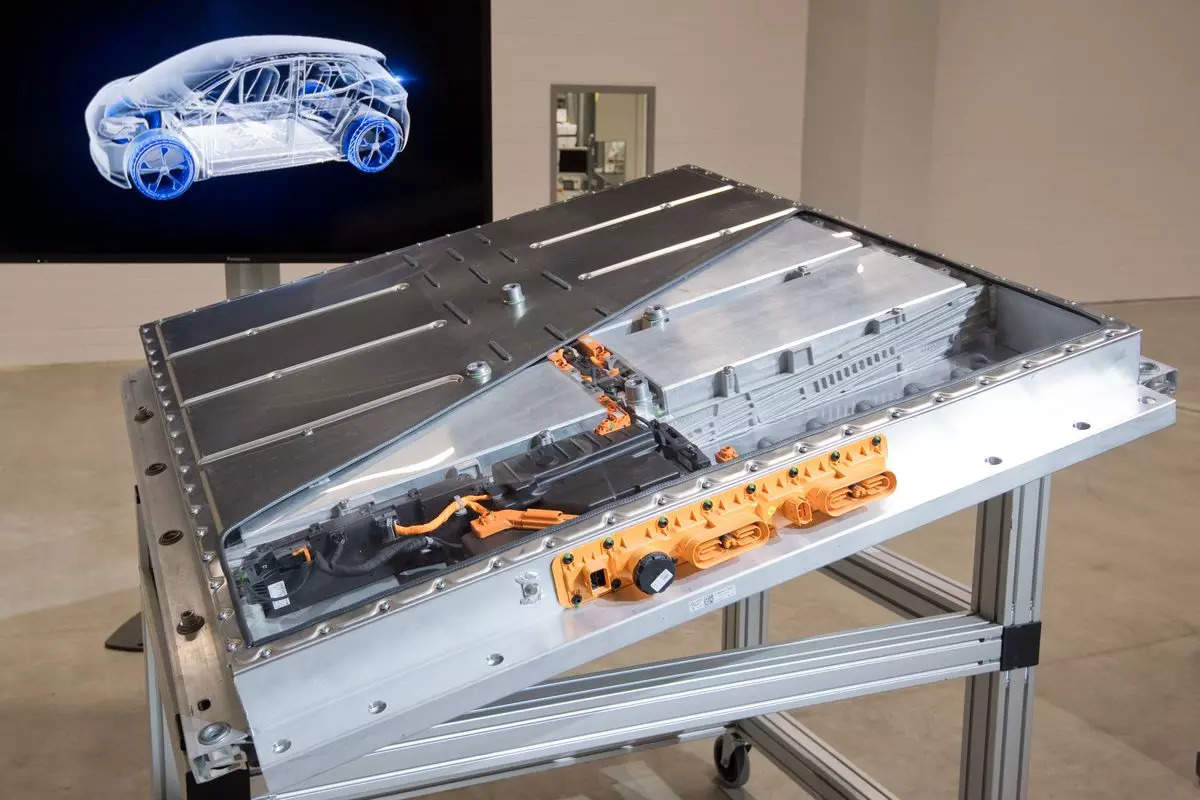
They are better known for their textile and garment business but lured by the growth prospects of electric vehicles in India, LNJ Bhilwara Group of Rajasthan is betting big on EV batteries, which it believes will be the driver of growth for the group in the future.
The company is in the final stages of setting up a 1 gigawatt hour battery facility in Pune in partnership with Replus Engitech and is already looking to expand it to 5 GWh by 2026.
“We have three different businesses, textiles, graphite and the power generation business. We continue to grow in at least the textiles and graphite businesses, but we also realize that the times are changing,” said Riju Jhunjhunwala, vice chairman, LNJ Bhilwara Group. “Going forward the next 10-15 years, technology, EVs, artificial intelligence are on the cusp of really growing. We as a group cannot shy away from this and we have to have a presence in some of these areas.”
The electric vehicle ecosystem is still in its nascent stages in India but it is already catching the attention of companies like Bhilwara Group that operate in diverse, even unrelated sectors. Lithium ion batteries are primarily used in two segments–electric vehicles and for stationary storage devices like solar lamps or rooftop panels. The country makes around 16 GWh of such batteries with EVs accounting for around 10 GWh of them. By 2030, this is estimated to grow to at least 500 GWh–350 GWh of which will come from EVs.
“As the grid in India cleans itself and moves away from thermal power stations, batteries will be the backbone and the majority of the power generation will come from solar and wind,” said Hiren Pravin Shah, executive director and CEO of the LNJ-Bhilwara Replus Venture. “As far as EVs is concerned, in the next 3-4 years the industry will mature, volumes will pick up and the range of the batteries will stabilize at a minimum 300 kilometers in real world conditions. So EVs would account for around 3-3.5 gigawatt hour of the sales for us and stationary storage will account for the rest 1.5 GWh capacity.”
As the grid in India cleans itself and moves away from thermal power stations, batteries will be the backbone and the majority of the power generation will come from solar and windHiren Pravin Shah, LNJ-Bhilwara Replus Venture
All of this would mean big business. According to CRISIL, EVs hold a revenue potential of INR 3 lakh crore by 2025-26 with automotive companies cornering half of the potential with the rest split between financers, insurers and shared mobility platforms. Additionally, as a supplier to the mainstream automotive companies, it will cater not only to all types of electric vehicles–two, three and four wheelers, but also to renewable companies in need of stationary solutions. Jhunjhunwala said this new business should form the fourth pillar of the group and account for at least a fifth of its revenues.”We would want 20% to come from this particular business in the next 5-7 years, because otherwise it will never be in focus. We have to see this as a serious business,” he said. “What we are really trying from our end is to have the most fast moving cutting edge systems integrator, which any of the big companies will need to build a technology. We will watch the big players and if they have to switch from a technology we should be able to do that extremely fast and at the lowest possible cost.”
“When I talk about cost today, our cost is dependent on the cost of imported cells from China. Tomorrow, when the Indian cell manufacturing starts in two, three years, one really has to see how competitive the Indian cell manufacturers are compared to the Chinese ones,” he added.
We will watch the big players and if they have to switch from a technology we should be able to do that extremely fast and at the lowest possible costRiju Jhunjhunwala, LNJ Bhilwara Group
There are potential pitfalls though. Already the domestic EV industry is highly cluttered with over 250 startups jostling for space. The pie will get larger with the shift from combustion vehicles gaining momentum, but even then it will not be able to support so many companies. Some are bound to die in a consolidation phase that may begin from 2025.
“Even in a mature market like China or Europe, there are over 50 brands of batteries with the top 10 who control 80% of the market and about 40 players for the balance 20% with each one having a pie for themselves,” said Shah. “It will be very similar here–very large players in the top five top 10 controlling the majority of the market. Who those top five top 5 will be, we have to wait and see. There will be large battery companies if they can quickly diversify their focus pumping money and there will be some like us completely riding on the technology wave of innovation and new cell chemistries. That is how the market will evolve.”
Further in order to insulate itself from the vagaries of the domestic market, it is also eyeing overseas markets like South East Asia, Middle East and Africa.
“We are not limited or restricting ourselves to the Indian market and will definitely want to be a global multinational company. And by virtue of that, we will explore other geographies. For example there is huge development happening in the Middle East,” Shah said. “They have the money and want to work with very strong technologically sound engineering companies. They want people who know you know the worth of the game and whom they can bet on in terms of technology and engineering. And we will be one of those who will do the execution.”
Also Read:
















